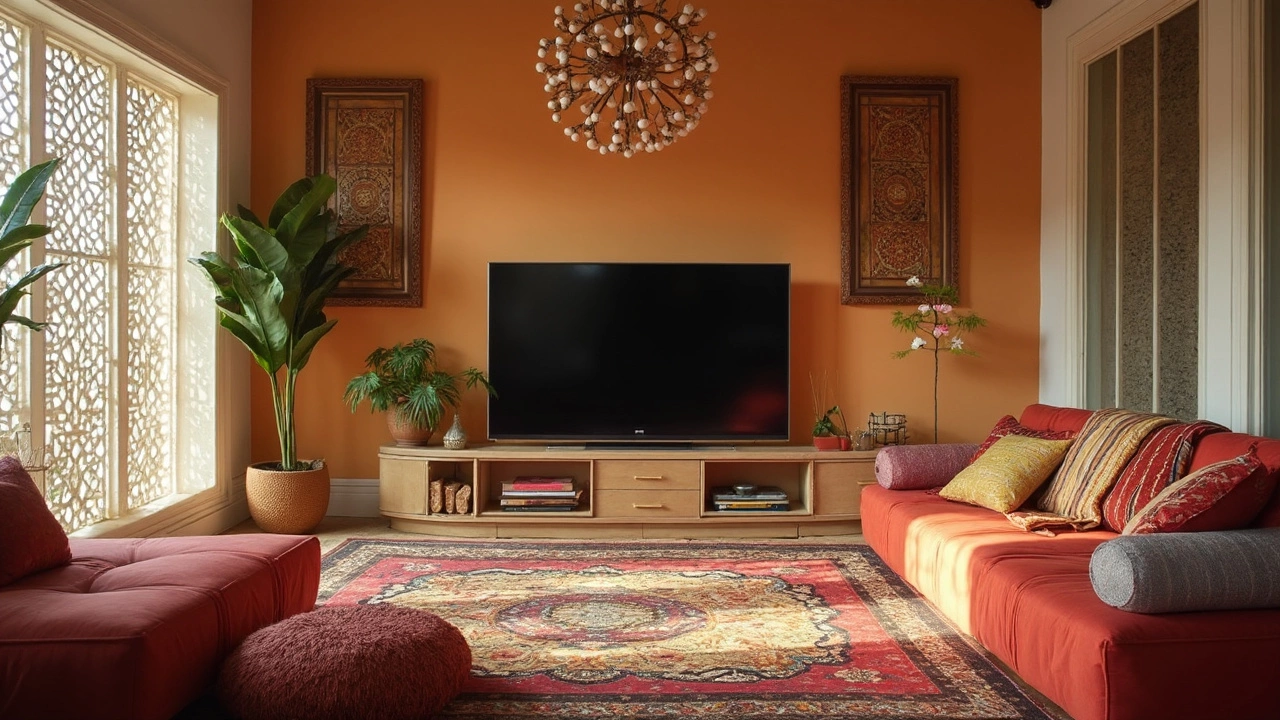TV Stand Colors: Your Guide to the Perfect Finish
When planning TV stand colors, the hue you pick for the TV console can set the tone for the whole living area. Also known as media console finishes, it helps tie together furniture, walls, and lighting. A well‑chosen shade does more than hide cords—it creates a backdrop that makes your screen feel part of the décor instead of an afterthought.
From a design perspective, living room furniture, sofas, coffee tables, and shelves that share a visual language with the TV stand can either clash or complement. If your sofa is a deep charcoal, a light‑gray TV console provides contrast without shouting. On the flip side, matching a walnut coffee table with a dark wood TV stand pulls the room together, creating a cohesive look that feels intentional.
What ties everything together is the color palette, the mix of hues that dominate your space, from wall paint to accent accessories. A neutral palette—beiges, soft greys, off‑whites—offers flexibility; you can swap cushions or artwork without worrying about clashing with the TV stand. Bold palettes, like navy walls with a teal stand, demand confidence but can give your room a signature vibe. Think of the TV stand as the anchor point of the palette; everything else should orbit around it.
How to Pick a Color That Works
Keeping up with interior design trends, current ideas that shape how people style their homes helps you avoid a look that feels dated in a year. Right now, matte finishes and muted earth tones are hot, while glossy black is making a comeback for modern lofts. If you love trends, choose a finish that’s timeless in its base—like a warm wood veneer—and add trend‑forward accents, such as a brass TV stand knob or a paint‑splatter backsplash.
Lighting is the silent partner that can make or break your color choice. lighting, the quality and direction of light in a room changes how a color reads at different times of day. A cool‑blue TV stand looks crisp under daylight but can feel sterile under warm LED lamps. Test paint swatches at various times—morning, afternoon, evening—to see how the hue interacts with natural and artificial light.
Don’t forget the finish itself. Matte, satin, semi‑gloss, or high‑gloss each reflect light differently and have distinct durability levels. Matte hides fingerprints, while gloss showcases grain in wood or pigment in paint. If you have kids or pets, a semi‑gloss finish offers a good balance between look and clean‑up ease.
Budget plays a role, too. You don’t need a custom‑paint job to achieve a designer feel. Many home‑improvement stores sell ready‑to‑apply chalkboard or concrete‑look paints that mimic high‑end finishes for a fraction of the price. Pair a budget‑friendly paint with a simple hardware upgrade—like brushed nickel brackets—and you’ll get a high‑impact result without breaking the bank.
By now you’ve seen how TV stand colors sit at the crossroads of furniture, palette, trends, lighting, and price. Below you’ll find a curated collection of articles that dive deeper into each of these angles, from deciding on a sofa size to mastering the 2/3 rule for coffee tables. Use these resources to fine‑tune your choices and create a living room that feels both stylish and personal.
